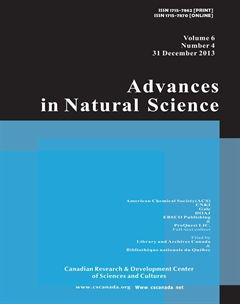Classical and Quantum Explanation of the Magnetic Focusing
ZHAO Min
Abstract
In Newtonian mechanics, the motion of the charge in the magnetic field is the equidistance helical line. It is composed of the uniform motion in magnetic fields direction and the circular motion in vertical direction. In quantum mechanics, its motion is the two-dimensional resonance. Its energy level is separate. Its wave function is probability. With this theory, magnetic focusing is explained to that a large number of charge moving in the magnetic field is not 100% at a point. They will be dispersed according to probability.
Key words: Charge; Magnetic field; Newtonian effect; Quantum; Magnetic focusing
1. CLASSIC EFFECT OF THE CHARGED PARTICLES MOVING IN A MAGNETIC FIELD
According to equations (5) and (6), we can know:
The particles do harmonic vibration whose amplitude and frequency are the same and the direction is vertical in the xy plane. In the ground state (n=0), the wave function is
Suppose there is a beam of charged particles at A point in the uniform magnetic field. According to the classic effect they do isometric helical motion. Radius, pitch, frequency, cycle are: w
Due to the angle which the particles velocity deviates from the magnetic field direction is very small, so cosθ≈1, sinθ≈θ, Although the radius of the charged particles trajectories are different their pitch are the same. That is these particles can converge to point A after different spiral in a period of revolution. This phenomenon is called magnetic focusing. The corresponding pitch is the focal length of the magnetic focusing.
If considering quantum effects, the Particles start off from A point to move in a plane perpendicular to the direction of magnetic field (xy plane) which harmonic oscillator is probability wave. The possibility which they converge to A point is the result of equation (12) given.
REFERENCES
China University of Science and Technology of Physics Class(Ed.). (1990). The physical test question and answer(pp.129-131). Hefei China: University of science and technology of China Press.
Landau, L. D., & Lifshitz, E. M. (1977). Quantum mechanics(pp.274-293). Benjamin: Pergamon Press.
Liang, S. R., & Wang, X. J. (Eds.). (1982). Basis of electrodynamics (pp.89-102). Beijing: Beijing Normal University Press.
Zen, J. Y. (1998). Introduction of quantum mechanics (pp.256-258). Beijing: Beijing University Press.
 Advances in Natural Science2013年4期
Advances in Natural Science2013年4期
- Advances in Natural Science的其它文章
- Biological Significance of Spicy Essential Oils
- Nuclear Energy From the Fission Process as an Alternative Source of Energy
- Effect of APS on Hormones Regulating Blood Glucose in Active Rats
- Spectrophotometric Determination of Methyl Paraben in Pure and Pharmaceutical Oral Solution
- Simulating Optimum Design of Handling Service Center System Based on WITNESS
- Population and Mutagenesis or About Hardy and Weinberg One Methodical Mistake
